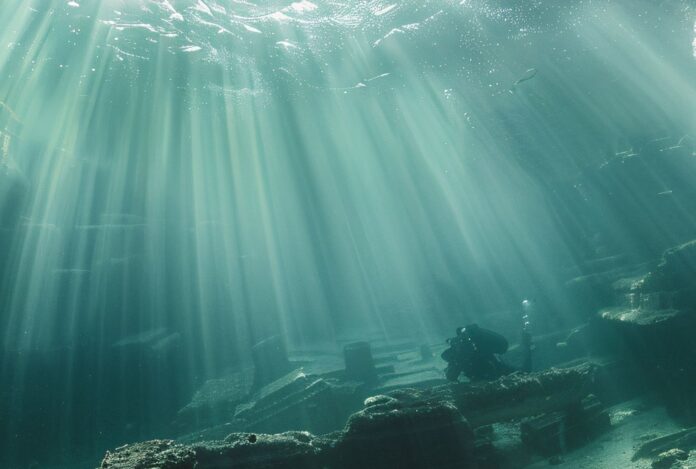 The pioneering discovery challenges the story of the origin of human beings, where scientists discover a 140,000 -year -old sunken city buried underwater off the coast of Indonesia.
The pioneering discovery challenges the story of the origin of human beings, where scientists discover a 140,000 -year -old sunken city buried underwater off the coast of Indonesia.
Hoomo Eremmers’ skull, ancient human ancestor, find out After more than 140,000 years of burial for the first time under layers of clay and sand in the Madora Strait between the Java and Madora Islands.
Researchers believe discovery It may be the first material evidence of a lost world of prehistoric land also known as Sundaland, which was once connected to Southeast Asia and was a wide tropical easy.
In the lost city, along with the bones of the skull, scientists have discovered about 6000 hole of animals of 36 species, including: Komodo Dragons, Buffaloes, Deer, Elephants.
Some remains contain discounts that are likely to be intended, evidence that the first humans have practiced advanced fishing strategies. Discoveries provide a rare glimpse into ancient human history, exploration of long -term lands in Sundaland and adaptations between the first humans in response to environmental change.


Excavations were discovered for the first time by marine sand mines in 2011, but scientists were unable recently in their history and their predecessors – a major teacher in excavation science.
According to the new study leader, the archaeologist Harold Berguus of Liden University in the Netherlands is characterized by the history of Huminins in the region with the great morphological diversity and the movement of the population.
Between 14000 and 7000 years, the ice rivers melted amazingly 120 meters, which immerses the Sondalland plains. Now, the fossils are recently studied by scientists.
Researchers analysis The layers of the sediment where the excavations were found and the Solok River Valley system was completely discovered fully buried through the submerged Sunda shelf. Valley deposits indicate the ecosystem of the booming river during the late Plistocene.
A turning point in human development
Homo Erectus is to determine a major turning point in human development. They were essentially the first of the first human beings, they resemble modern humans, but with longer, more muscular bodies, longer legs and shorter arms.
In the study, scientists used visually stimulating the quartz granules to determine the date of the deposits again to the sun. As a result, scientists estimate that the valleys and fossils that were flooded dating back to about 162,000 to 119 years.
The Homo Erectus skull, a front bone and a wall bone, was compared with the well -known HOMO fossils from the SambungMakan website in Java – the near match confirms that the Madura Strait fossils belong to Homo Erectus. This greatly expands the known range of species.
A new study introduces the world’s first direct guide to the presence of ancient humanitarian ancestors in the landscape now planted in Sundaland, which represents a challenge of previous ideas on the geographical borders of Homo Erectus.

